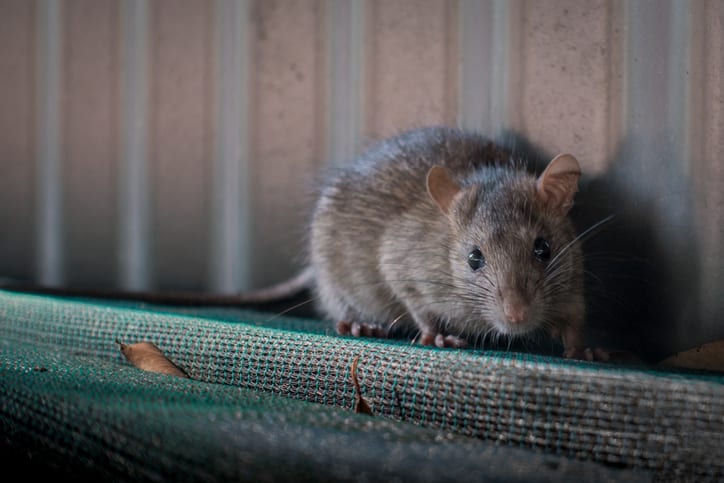Residential & Commercial Rodent Control
Rodents, including rats, mice and squirrels, can be a nuisance at any time of year, but they tend to be most troublesome when outdoor temperatures begin to drop in the fall. Cooler temps send rodents scurrying for a warmer place to nest. While squirrels and tiny little mice may look cute in pictures, when you discover their evidence in your home or business, their appeal evaporates quickly.
Signs of a Rodent Infestation
Think you might have a rodent problem? Check for these signs:
- Droppings–You might find droppings in your attic, pantry or kitchen or near rodent pathways or anywhere they would find food or shelter. Mice droppings are pointed at the ends and are between 1/4″ to 1/8″ in length. Rat droppings are flat on the ends like pellets and are larger. They are black but change to white with time.
- Chew Marks–The main characteristic of rodents is their two pair of incisor teeth in their upper and lower jaws. These teeth continue to grow and rodents chew constantly to keep their length in check. Look for signs of gnawing on wood, fabric, plastic paper, metal, rubber, and even brick and concrete. Look for chew holes in cabinets, pantries and crawlspaces, near furnaces, bathtubs and hot water heaters, and around the eaves, soffits and fascia of your building’s exterior.
- Burrows and Nests–Outside this might look like piles of leaves, bark, mulch or trash piled up in low lying areas or against a fence, woodpile, or outdoor structure. In the attic you might find a pile of chewed up fabric, paper, cardboard or insulation.
- Runways and Rub Marks–Rodents tend to travel the same path back and forth from their nest to find food and water. They will create a visible pathway through the dirt or grass, often along a fence line. The oil in their fur will leave marks where their bodies rub against walls or where they squeeze in and out of small openings.
- Tracks–Watch for tiny footprints in mud, dirt or dust in the attic, along the fence line, or around building perimeters.
Routine Rodent Management
SafeHaven provides routine rodent management on a Monthly or Every Other Month service frequency to ensure rodent populations are not a threat to your employees or family. These programs combine exterior bait stations with any other needed control measures. Examples of further control measures are rodent exclusion, harborage reduction, trapping, interior baiting, and odor elimination.
Rodent Abatement
SafeHaven performs rodent abatement for severe infestations. This program is very labor intensive and may involve as many as two visits per week. Prices are variable given type of rodent, population size, and size of structure.




